West Broad Carhouse
The West Broad Carhouse had its roots in 1875 when the Glenwood & Greenlawn Street Railroad Co. started. The G&GS RR was a three-and-a-half-foot narrow gauge horsecar line that ran on West Broad Street from Broad and High to the two State Asylums located west of Central Avenue. There was also a branch on Glenwood that led to Green Lawn Cemetery.There needs to be more information on the early location of their stable and carbarn. They were likely built on the southeast corner of W Broad and Glenwood, where the carbarn shown in the photos was eventually built.
In 1890, the G&GS RR was rebuilt with heavier rail and electrified. After completing the work, it joined the Columbus Consolidated Street Railway Co. The carbarn capacity was increased because other CCSR lines would use the West Broad Carhouse.
Compared to the North and South High carbarns, the complex had the advantage in that the streetcars entered the property from the south and exited at the north, never having to back up. This would be very convenient in 1940 when the site was converted to a trolley-coach station.
Streetcars have a carhouse or carbarn, trolley-coaches have a station, and motorbuses have a garage as their base of operation. Before 1940, the site was the West Broad Carhouse. After 1940, when it was converted to serve trolley-coaches, it was the Glenwood Station.
Most buildings were partially torn down in 1940 when the site was converted to a trolley-coach station. Narrow remnants of the big carbarns along Glenwood were left with the trolley-coaches being stored outside. After the trolley-coach station was closed, Circa1965, the site was used to store electric company supplies, and as a line crew base.
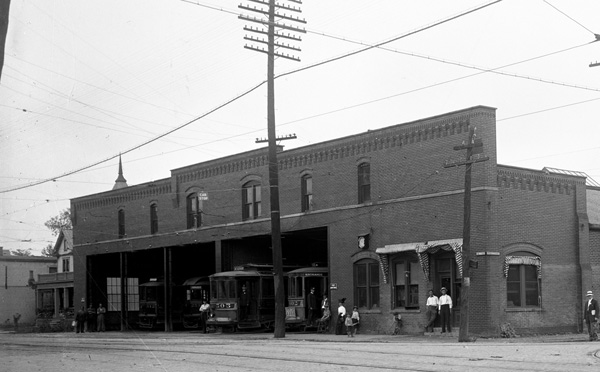
Click to enlarge
A close-up of the West Broad Carhouse taken after 1909. The highest-numbered streetcar in the photo, No. 602 was built in 1909. As the streetcars started their run, they exited from the front onto Broad Street. In later photos, the house on the left will be changed into a business or office. It may have belonged to the streetcar company.Photo from the Alex Campbell Collection, Circa 1910.

Click to enlarge
1909 Ohio Inspection Bureau Map showing the West Broad Street Carbarns.Streetcars entered the facility from Glenwood Avenue. Once on the property, no streetcar had to back up. Capital Street is an alley separating the front carbarn from the back carbarn. The two buildings had a capacity of 105 streetcars.
Drawing from the Edward Miller Collection.
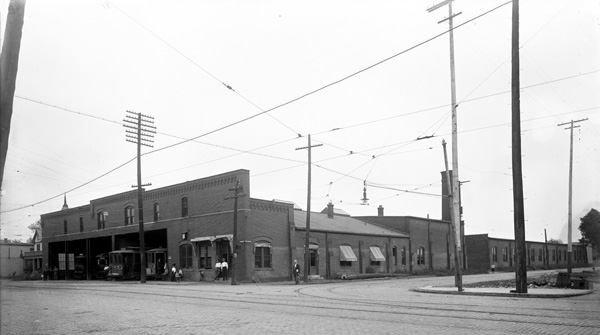
Click to enlarge
The same photo as the first photo with the Glenwood Avenue side shown. The 1890 power plant with its smoke stack is visible along with the Capital Street alley separating the two buildings.Photo from the Alex Campbell Collection, Circa 1910.

Click to enlarge
A later shot of the carbarn front. The pole line with seven cross arms has been replaced, probably with a cable.Photo from the David Bunge Collection, Circa 1920.
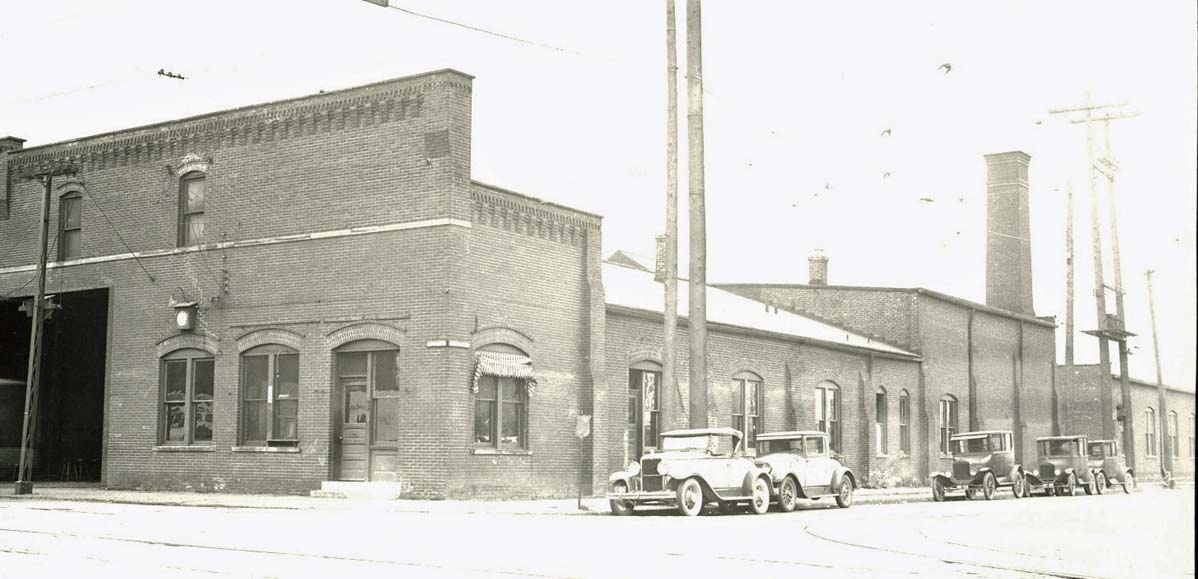
Click to enlarge
A close-up of the office area, which will change in the next photo.Photo from the David Bunge Collection, Circa 1920.
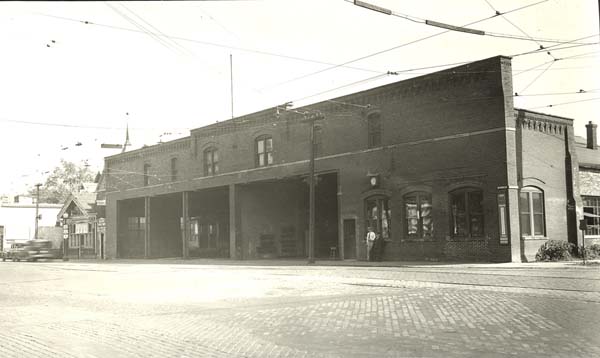
Click to enlarge
The office area has a new door with the old one bricked up.The house on the left has an extension bringing the front to the sidewalk.Photo from the David Bunge Collection, Circa 1930.
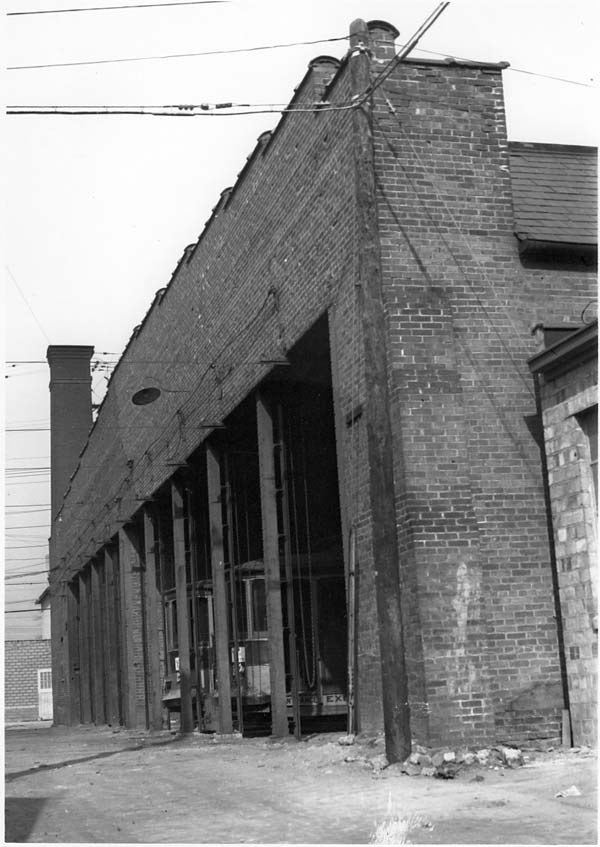
Click to enlarge
The camera is looking west down the alley toward Glenwood Avenue. The back of the front building is shown with the old powerhouse smoke stack on the corner of the building.Photo from the David Bunge Collection, Circa 1930.
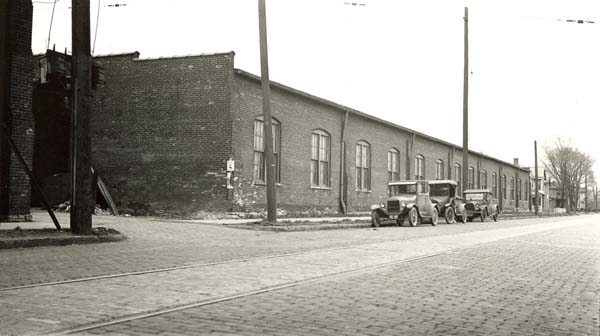
Click to enlarge
The second building with a few interesting automobiles. The wall facing the alley will be changed in a later photo.Photo from the David Bunge Collection, Circa 1920.
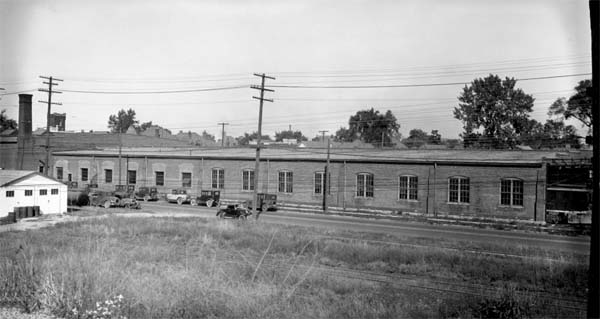
Click to enlarge
The photographer is standing on the B&O RR fill. The first six windows have been changed out with new brickwork. To the right of the smoke stack, the Fire Department’s Engine House No. 10 tower can be seen.Photo from the David Bunge Collection, Circa 1930.

Click to enlarge
Back at the alley, notice that there is now an entrance to the rear carbarn and a large window on the alley side. The middle kid looks like he has a pea shooter.Photo from the David Bunge Collection, Circa 1930.
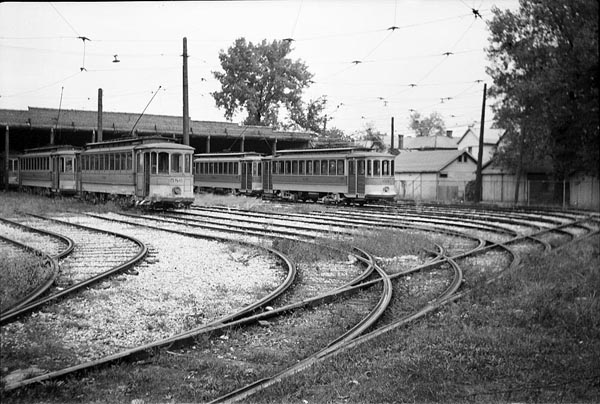
Click to enlarge
The yard behind the rear carbarn. Note the intricate track work with all the switches leading to the carbarn. The overhead trolley wire was also complicated and required proper alignment to keep the pole on the wire as the streetcar traveled through the switch.Photo from the Alex Campbell Collection, Circa 1930.
The Great Flood of 1913

Click to enlarge
The Great Flood of 1913 caused considerable damage to the West Broad Carhouse. When the railroad fill separating the high water from Franklinton gave way, the water rushed through the carbarns with enough force to push a streetcar and snow sweeper into Capital Street. It also piled six to eight feet of debris in the doorways. Streetcar service would be limited while cleanup and repair were underway.The West Broad Street Bridge over the Scioto River was washed out in the flood. It took a month (until April 24, 1913) to build a temporary bridge for the restoration of service on the Broad Street line.
Photo from the Alex Campbell Collection, March 1913.
Glenwood Station
In the early 1940s, the Columbus Southern & Ohio Electric Co. converted the West Broad Carhouse to the Glenwood Station, from handling streetcars to trolley-coaches. Most of the existing buildings were demolished leaving narrow buildings along Glenwood Avenue for servicing the trolley-coaches. The majority of the property was outdoor paved parking for the trolley-coaches.The next three photos show the changes underway to create the Glenwood Station.
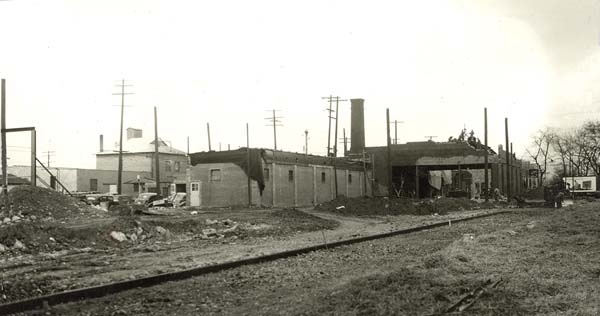
Click to enlarge
The camera is looking north from the rear of the property. The rear carbarn has been demolished as has most of the front building. New construction is underway on the left side of the photo. The old powerhouse smoke stack still stands, but not for long.Photo from the David Bunge Collection, Circa 1940.

Click to enlarge
The camera is looking south from inside the front carbarn. The pit for working under the equipment is visible. The wall on the left divided the two halves of the front carbarn.Photo from the David Bunge Collection, 1940.
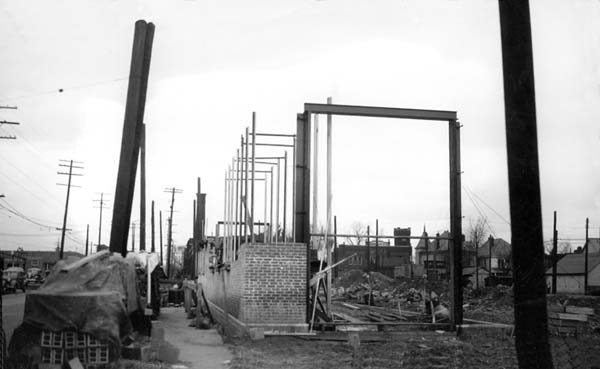
Click to enlarge
The camera is looking north with Glenwood Avenue on the left. Firehouse No. 10 is framed by the large portal being prepared for the trolley-coaches.Photo from the David Bunge Collection, 1940.
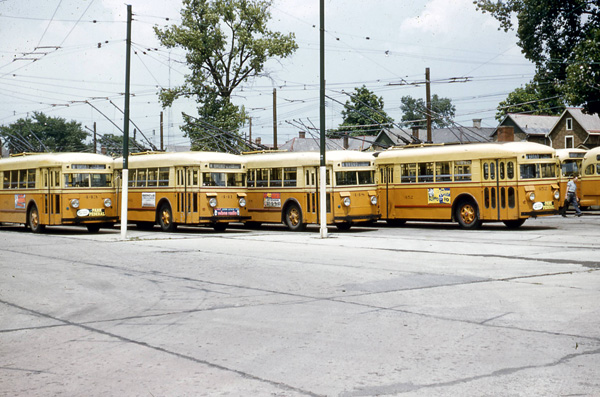
Click to enlarge
The Glenwood Station in July 1958.Photo from the Bill Volkmer Collection.